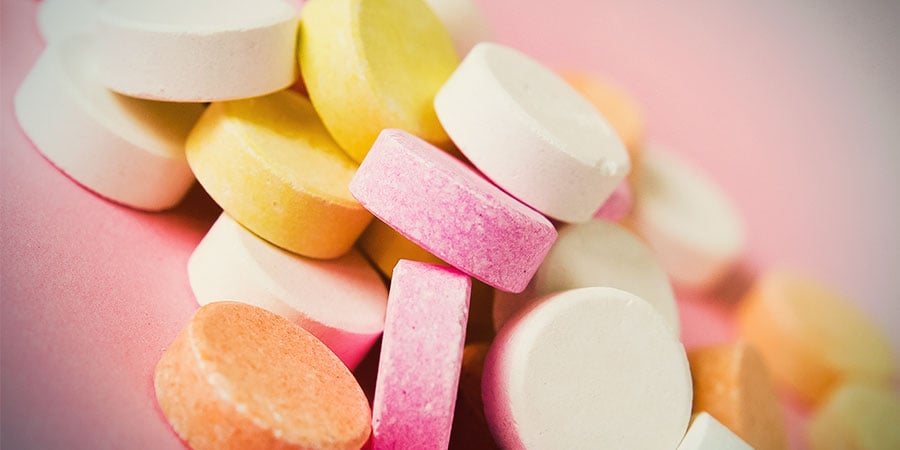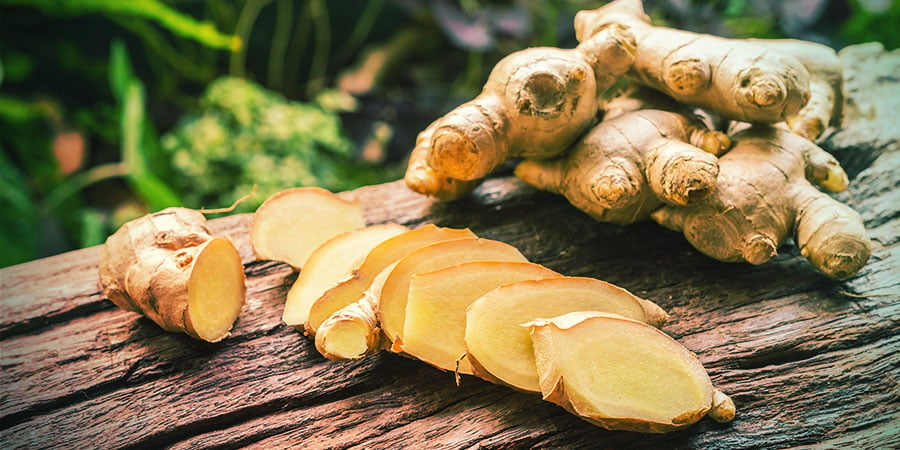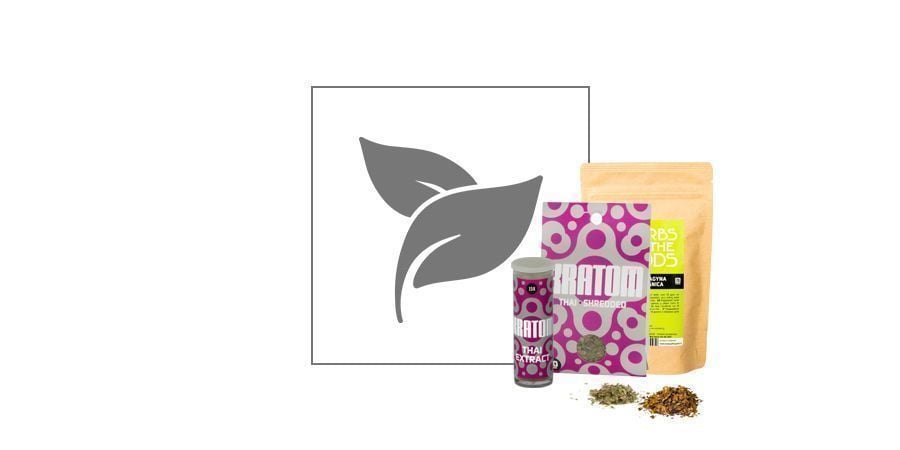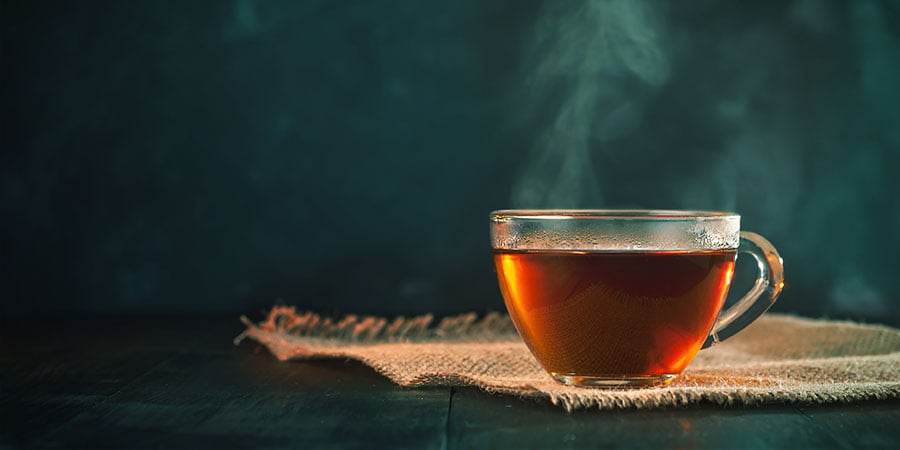How to prevent kratom nausea
Kratom nausea is a common and sometimes very unpleasant experience. Sometimes it's unavoidable, but much of the time it can be reduced and managed—if you understand why it occurs. Here we explain what you can do to keep kratom nausea to a minimum.
A little bit of Kratom can make you feel energized and positive. Slightly more Kratom can relax you. But Kratom can also make you feel queasy, and no one wants that. Here are some ways to prevent yourself from feeling sick after using Kratom.
KNOW AND RESPECT YOUR DOSAGE

Taking too much Kratom is almost guaranteed to make you feel sick to your stomach. Stick with the lowest effective dose to reduce your risk.
To find the dose that's right for you, take a gram and see how you feel. If you don't get the result you want, take another gram after 45 minutes. As soon as you start to feel something close to what you're after, stop. Pick up where you left off the next day and repeat the gradual increases, stopping again before you go too far.
When measuring out your dose, be precise. Instead of eyeballing it, use a digital scale so you know exactly how much you're taking. Even after you find your sweet spot, wait at least four hours before taking another dose of Kratom to avoid feeling sick.
If you change strains or suppliers, the potency can change as well requiring you to adjust your dosage or risk unwanted side effects. Until you have some experience, stick with the same type of Kratom and use the same reputable source.
ANTACIDS 30 MINUTES BEFORE, LIGHT SNACK 30 MINUTES AFTER

The body better absorbs the alkaloids from kratom on an empty stomach—lack of digestive congestion ramps up bioavailability. However, kratom is infamous for taking its toll on the stomach, and consuming it on an empty one only amplifies this side effect. Users can prevent this by taking antacids 30 minutes before ingesting kratom. These tablets help to neutralise stomach acid, counter stomach upset, and release pent-up gas.
Be warned. Although antacids help to sooth the stomach, they are known as kratom potentiators. They enhance the psychoactive effects of kratom’s alkaloids. It’s a tradeoff that some users happily initiate.
It's advised to consume a light snack 30 minutes after taking kratom. This will settle the stomach and make the rest of the experience more enjoyable.
MAKE TEAS INSTEAD OF TOSS N' WASH
If you get in a hurry and toss back some powder, you're more likely to feel unwell than if you sip on Kratom tea.
When tossing Kratom, you ingest the entirety of the plant; chlorophyll, waxes, fibers, etc. Those compounds are not responsible for the unique effects of Kratom, but can contribute to the discomfort. When preparing tea, you filter out much of those unnecessary ingredients, but extract all the potent alkaloids into the water. This is why tea is an efficient way to reduce feeling queasy.
If you must use Kratom by toss n'wash, use a smaller amount than you would normally use to brew a tea.
USE GINGER TO SOOTH OR PREVENT AN UPSET STOMACH

Ginger is a natural spice that's famous for settling stomachs. Grind it up and add a little to your Kratom whether you're washing or brewing tea. The flavour is a tad spicy, but it tastes way better than powdered Kratom.
If you're already feeling sick, chewing on a slice of fresh ginger could make you feel better. Crystallized ginger is a candied form of this root that may be a little more palatable if the more pungent, fresh version doesn't exactly rock your world.
Don't forget cannabis is just as famous as ginger for having positive effects on your stomach. If it's legal to smoke where you're located, this is another all-natural solution, but don't forget it'll add another psychoactive agent to your herbal cocktail. Try this tip with caution.
By taking precautions and treating Kratom with respect, you can get all the benefits from this beneficial herb without experiencing any side effects.
-
 4 min
7 March 2025
Kratom safety & side effects: What you need to know
Kratom exhibits different effects and side effects depending on the dose. Relatively poorly studied compared to many other drugs, there's a lot we don't know about this strange plant and its...
4 min
7 March 2025
Kratom safety & side effects: What you need to know
Kratom exhibits different effects and side effects depending on the dose. Relatively poorly studied compared to many other drugs, there's a lot we don't know about this strange plant and its...
-
 5 min
3 March 2025
Kratom dosing guide: Everything you need to know
Dosing kratom can be difficult. You need to take into account tolerance, body weight, the specific strain, and, unusually, what kind of effects you're looking for. Here's what you need to know.
5 min
3 March 2025
Kratom dosing guide: Everything you need to know
Dosing kratom can be difficult. You need to take into account tolerance, body weight, the specific strain, and, unusually, what kind of effects you're looking for. Here's what you need to know.
-
 4 min
31 December 2024
The Diverse Effects Of Kratom
Kratom can energise and lift you up, but it can also bring about relaxation and help you sleep. Interested to find out more about this strange plant? Then keep reading to become acquainted with the...
4 min
31 December 2024
The Diverse Effects Of Kratom
Kratom can energise and lift you up, but it can also bring about relaxation and help you sleep. Interested to find out more about this strange plant? Then keep reading to become acquainted with the...
-
 3 min
27 December 2024
How To Consume Kratom
Kratom can be consumed in numerous ways and offers unique effects depending on the dose, strain, and other factors. Here we look at the different consumption methods for kratom, examining the...
3 min
27 December 2024
How To Consume Kratom
Kratom can be consumed in numerous ways and offers unique effects depending on the dose, strain, and other factors. Here we look at the different consumption methods for kratom, examining the...














 United States
United States













